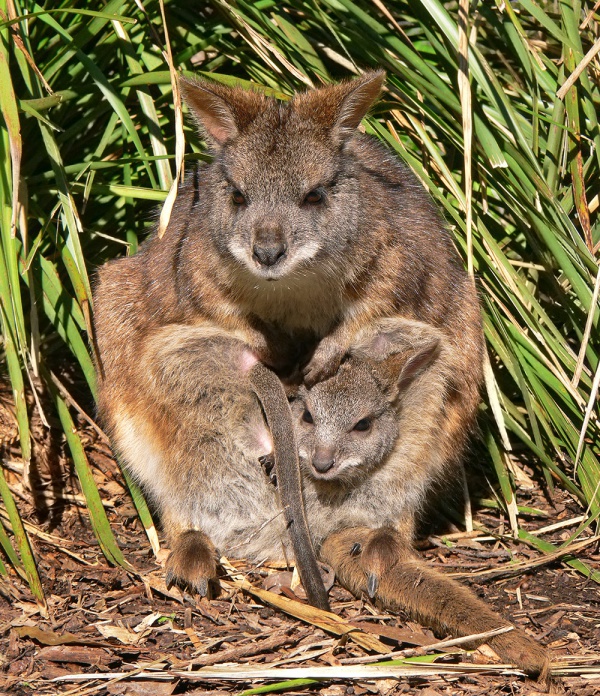Facts About Parma (White-throated) Wallaby
The Parma wallaby, a small marsupial first identified by British naturalist John Gould in the 1840s, was believed to have gone extinct by the late 1800s. However, in a surprising twist, a population was discovered on New Zealand's Kawau Island in 1965 during an effort to control introduced tammar wallabies. These Parma wallabies were captured and sent to various institutions with the aim of breeding them in captivity and eventually reintroducing them to their native Australian habitat. Just two years later, in 1967, another population was found near Gosford, New South Wales, rekindling interest in the species.
The Parma wallaby is the smallest member of the Macropus genus, weighing between 3.2 and 5.8 kg and measuring about half a meter in length. It has reddish or greyish-brown fur on top and pale grey fur underneath. This species prefers wet sclerophyll forests with thick undergrowth and grassy patches, but it can also be found in dry eucalyptus forests and rainforests. Mostly nocturnal, the Parma wallaby spends its days hiding in dense scrub and emerges before dusk to feed on grasses and herbs in forest clearings.
While still rare, the Parma wallaby's population is slowly increasing as long as their habitat remains intact. Interestingly, the wallabies on Kawau Island are smaller than their mainland counterparts, likely due to competition for limited food resources—a phenomenon known as insular dwarfism.
